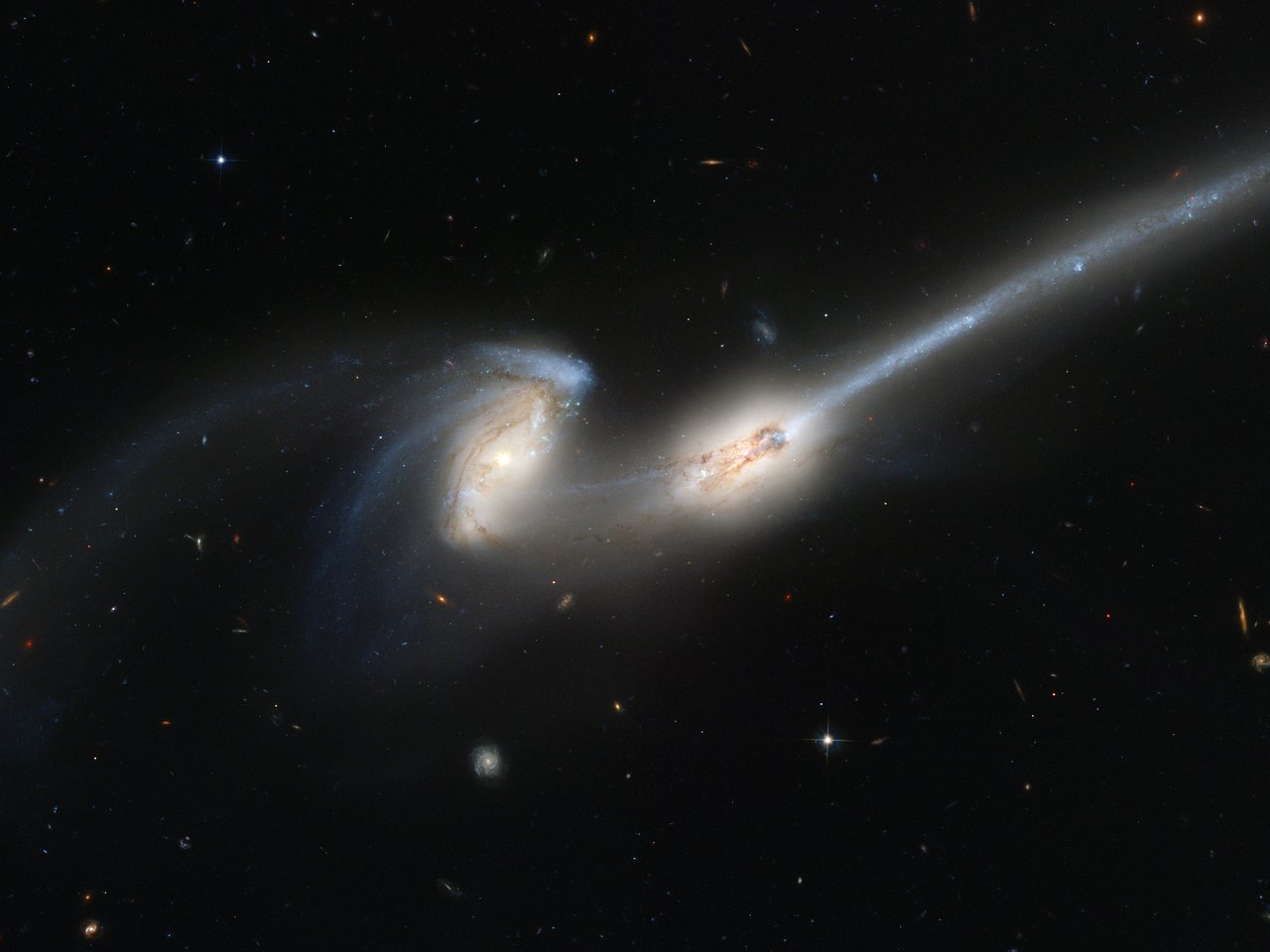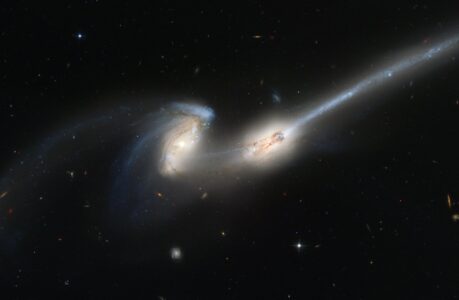Introduction: The Cosmic Symphony of Galaxy Formation
In the boundless expanse of our universe, galaxies stand as the shining stars of the celestial show. These awe-inspiring conglomerates of stars, gas, and dust have been a source of fascination for astronomers and stargazers alike for centuries. Yet, the question persists: What are the underlying causes that lead to the formation of galaxies? What cosmic forces harmonize to create this grand spectacle? In this comprehensive article, we will embark on a profound journey into the cosmic symphony of galaxy formation, uncovering the intricate interplay of various factors that give birth to the mesmerizing galaxies we behold today.
Chapter 1: Gravity’s Gravitational Pull
Gravity, the Cosmic Architect
At the core of every galaxy’s genesis resides the omnipresent force of gravity. Gravity is the cosmic architect that orchestrates the assembly of matter, coaxing it to converge and form colossal structures in the frigid void of space. On the grandest scales, gravity plays the pivotal role of shaping galaxies from the raw materials left in the wake of the Big Bang.
Dark Matter: The Enigmatic Partner
However, gravity’s story in the formation of galaxies does not conclude with ordinary matter alone. A significant portion of the universe’s mass comprises an enigmatic entity known as dark matter, a substance that neither emits nor absorbs electromagnetic radiation. Dark matter wields its gravitational influence as a silent partner in the cosmic dance, aiding in the orchestration of visible matter’s distribution within galaxies.
Chapter 2: Galactic Nurseries: Giant Molecular Clouds
Cosmic Incubators
While gravity sets the stage for galaxy formation, it depends on other vital factors to weave the intricate tapestries of stars and gas that characterize galaxies. Among these indispensable factors, giant molecular clouds emerge as cosmic incubators par excellence. These colossal assemblages of gas and dust serve as celestial nurseries where new stars come into existence.
The Birth of Stars
Within the bosom of these molecular clouds, gravity operates as the catalyst, prompting regions of higher density to crumble under their own gravitational pull. This gravitational collapse acts as the midwife, ushering in the birth of stars. It triggers nuclear fusion within these newborn stars, as hydrogen atoms fuse under the extreme pressures and temperatures, illuminating galaxies with their radiant brilliance. These nascent stars, often numbering in the millions or billions, serve as the foundational building blocks of galaxies.
Chapter 3: Supernova Explosions: Galactic Chaos and Renewal
Cosmic Pyrotechnics
The saga of galaxy formation is not a serene narrative of starbirth alone; it is also punctuated by cataclysmic explosions—supernovae, the dazzling demise of massive stars. When a massive star exhausts its nuclear fuel, it undergoes a spectacular explosion, releasing a colossal surge of energy.
Elemental Alchemy
Supernovae serve as the cosmic crucibles where elements heavier than hydrogen and helium are forged. These elements, created amidst the fiery maelstrom of a supernova, are subsequently scattered into the cosmos, enriching the surrounding regions with the raw materials needed to forge planets, moons, and a myriad of celestial bodies. This stellar recycling process stands as a cornerstone of galaxy evolution.
Chapter 4: The Role of Dark Matter
The Cosmic Conundrum
Dark matter, though shrouded in mystery, undeniably plays a fundamental role in the formation and evolution of galaxies. Its gravitational sway extends far beyond the boundaries of what we can directly perceive, shaping the sprawling, large-scale structure of the universe. Dark matter’s existence becomes apparent through its indirect gravitational effects on visible matter.
Galactic Spin and Dark Matter Halos
Galaxies, in their essence, are not isolated islands of stars but rather are ensconced within vast halos of dark matter. These dark matter halos provide the gravitational scaffolding that steers the motion of stars and gas within galaxies. They also influence a galaxy’s rotational dynamics, determining its overall shape and structure.
Chapter 5: Cosmic Collisions: The Ballet of Galactic Mergers
Interstellar Pas de Deux
While galaxies can gradually assemble through the accretion of matter, some of the most spectacular galactic formations we observe are the outcome of cosmic collisions. When two galaxies are drawn together by the irresistible force of gravitational attraction, it becomes a spectacle of cosmic proportions. These interstellar encounters can dramatically reshape the galaxies involved.
The Birth of Elliptical Galaxies
In the wake of such galactic collisions, the combined gravitational forces can propel stars and gas in various directions, leading to a chaotic dance of cosmic proportions. This tumultuous choreography frequently results in the formation of elliptical galaxies, distinct from their spiral counterparts by their absence of spiral arms. These collisions provide an extraordinary window into the dynamic and ever-evolving nature of our universe.
Unveiling the Cosmic Tapestry
As we continue to peer deeper into the heart of the cosmos, we uncover the intricate forces and factors that coalesce to bring galaxies into existence. Gravity, dark matter, molecular clouds, supernovae, and cosmic collisions are the elemental threads that weave the cosmic tapestry of galaxy formation. Each galaxy we observe offers a unique testament to the symphony of these cosmic forces, recounting a story that spans billions of years. While we’ve unveiled many of the secrets surrounding galaxy formation, the universe remains a vast treasure trove of uncharted wonders, beckoning us to embark on a never-ending journey of exploration and discovery.
In this extended exploration of galaxy formation, we’ve peeled back the layers of the cosmic onion, revealing the intricate dance of gravity, dark matter, molecular clouds, supernovae, and galactic collisions that breathe life into the galaxies gracing our universe. These celestial phenomena are the brushstrokes on the canvas of the cosmos, painting a picture of cosmic evolution that continues to captivate astronomers and enthusiasts alike. The universe, it seems, has an inexhaustible supply of mysteries waiting to be unveiled, inviting us to ponder its grand design and unravel its enigmatic beauty.

